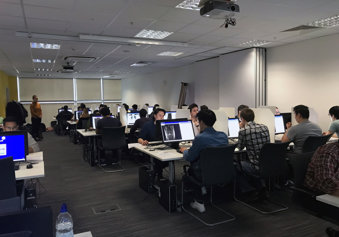FRCR Part 1 (Radiology) - CR1 - purpose of assessment statement (anatomy)
LEARN MOREThe First FRCR Exam (Anatomy) assesses knowledge of anatomy as shown by radiological studies. The purpose of this exam is to assess whether those undertaking specialty training in clinical radiology have an appropriate knowledge of the anatomy that underpins all radiological imaging including radiography, fluoroscopy, angiography, computed tomography (CT), ultrasound imaging and magnetic resonance imaging (MRI). As the knowledge assessed in this exam is essential to clinical radiology practice, this exam should be completed during the first year of clinical radiology training (ST1).
Radiological anatomy is a cornerstone of clinical radiology for several reasons:
- a sufficient understanding of the radiological anatomy is a prerequisite to performing any radiological study.
- radiologists need a thorough knowledge of normal radiological anatomy to be able to recognise abnormalities.
- radiologists need to be able to competently and accurately articulate the anatomical site of any abnormality to clinical colleagues.
Radiological anatomy is anatomy shown by radiological studies. It is different to traditional anatomy demonstrated by dissection or surface anatomy. The structures and anatomical terms may be the same but have a different appearance on various radiological studies. Each imaging technique depicts human anatomy in a unique way. This unique nature of radiological anatomy mandates a specific education in, and subsequent testing on, pure radiological anatomy. The syllabus for this exam is described in the specialty training curriculum.
The First FRCR Exam (Anatomy) is examined in the form of an electronic image viewing session. The exam format seeks to mimic what radiologists encounter in clinical practice in order to be valid, thus the questions consist of radiological images on a computer screen, as this is the normal medium, as opposed to film or printed on paper.
The exam consists of 100 questions; the majority of these are relatively simple with an arrow indicating a specific anatomical structure as shown by a specific modality. The question asked is typically “name the arrowed structure” with space provided for a free text answer. The exam therefore assesses candidates’ recognition of radiological anatomical structures and unprompted recall of their precise names, which is a key aspect of the everyday work of clinical radiologists. Furthermore, doing so in a timely manner, without routine recourse to reference material, reflects real-life clinical practice.
The primacy of precision and clarity of communication about radiological anatomy is reflected in the way the exam is constructed and marked. For example, accurate spelling is expected. Safe clinical practice is similarly emphasized, for example, with an emphasis on correct denotation of left and right. Examiners do take account of variable terms in use around the world for the same structure. The RCR explicitly recognises the Terminologica Anatomica, an internationally agreed taxonomy. For more information, please read Advice for Candidates.
Our exams
Find out more about our FRCR exams in clinical radiology and clinical oncology, and DDMFR exams in dental and maxillofacial radiology.
